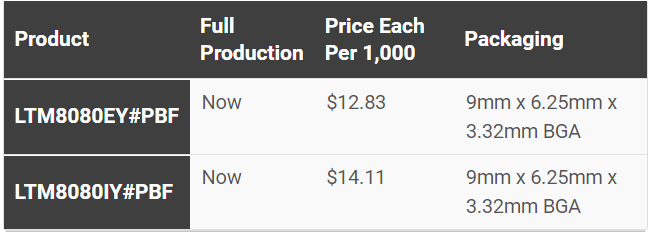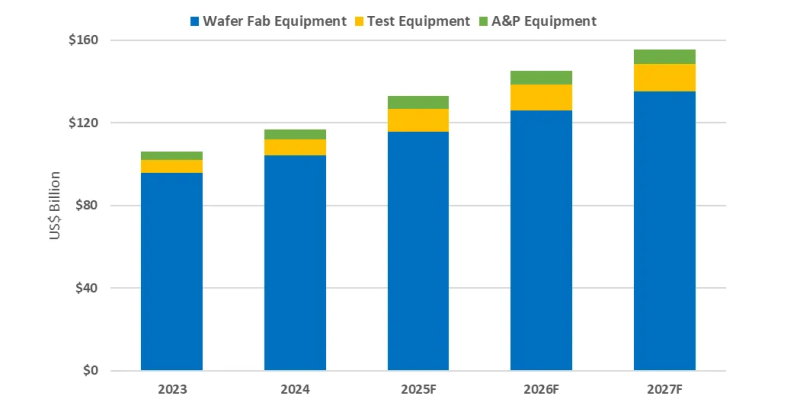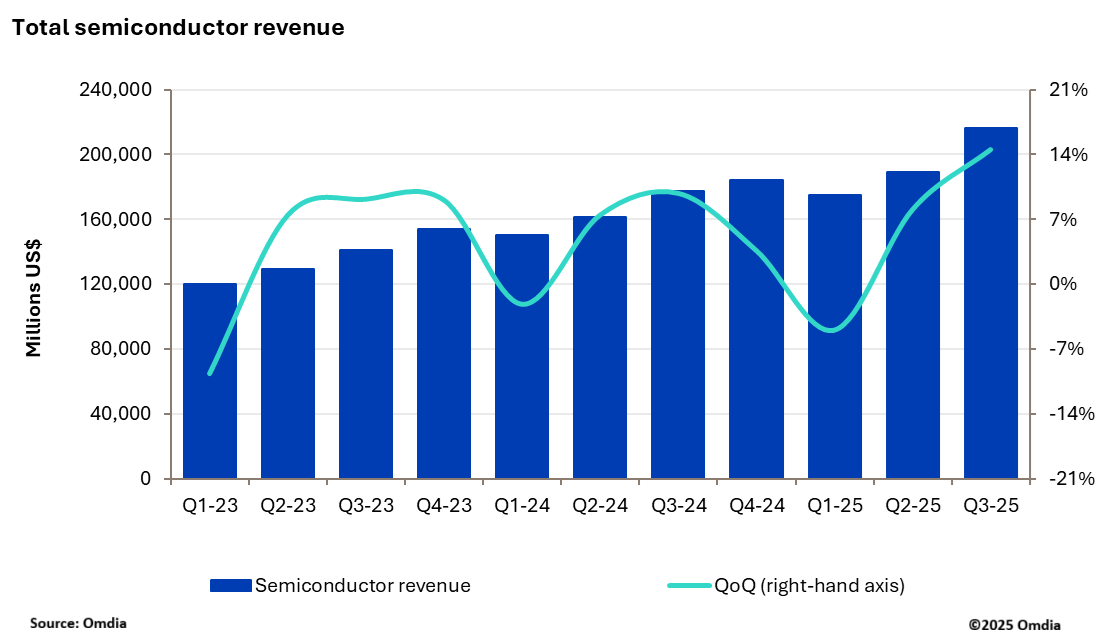ADI has introduced a dual output DC/DC μModule regulator with patented silicon, layout, and packaging innovations. Operating from up to 40V input, the LTM8080’s front-end is a high efficiency synchronous Silent Switcher step-down regulator followed by two separate low noise, low dropout (LDO) regulators. To further suppress switching noise, the LTM8080’s packaging integrates an EMI barrier wall or shield. The result is low noise values of <1μVRMS (10Hz to 100kHz), 2nV/√Hz (10kHz) spot noise, and 80dB PSRR (100kHz). Compared to discrete solutions without an EMI shield, the LTM8080 reduces output ripple voltage by up to 70% for a simplified and quiet design. The LTM8080 is specifically designed to power digital loads that are susceptible to switching regulator noise such as data converters, RF transmitters, FPGA I/O and clock, op amps, transceivers, and medical scanners.
The LTM8080 μModule regulator’s integrated Silent Switcher architecture minimises EMI emissions and enables the device to pass CISPR22 Class B and CISPR25 Class 5 without an input filter. The adjustable switching frequency (200kHz to 2MHz) and selectable operation modes minimise the risk of frequency interference for very low noise instrumentation and high speed/high precision signal chain applications.
LTM8080 Additional Features:
· Dual 500mA or Single 1A Output Current
· Output Voltages: 0V to 8V
· Voltage Tracking Function to Minimise Power Loss
· 100μA SET Pin Current with ±1% Initial Accuracy
· Parallelable for Lower Noise and Higher Current
Pricing and Availability

Source: Electronics Weekly
Stay up to date with the latest in industry offers by subscribing us. Our newsletter is your key to receiving expert tips.

Worldwide semiconductor equipment sales are projected to grow 13.7 percent in 2025, reaching a record 133 billion dollars, Semi announced at Semicon Japan. This momentum is expected to continue throug

The smartphone industry is facing considerable cost challenges in 2026 amid ongoing memory supply shortages and rising prices. This situation is expected to lead to a 1.6% decrease in annual shipments

New research from Omdia shows that the semiconductor market delivered a record breaking performance in 3Q25 with industry revenue reaching $216.3bn, up 14.5% quarter-over-quarter (QoQ). This marks the